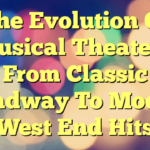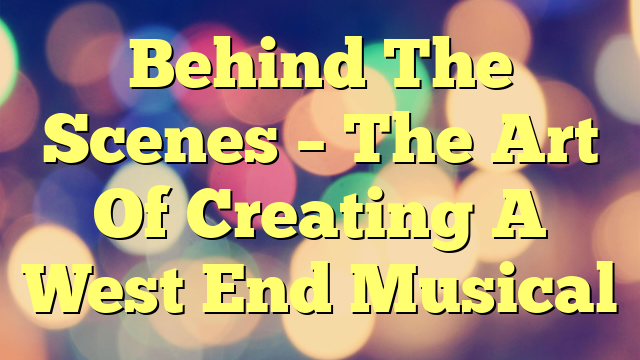Many people find themselves captivated by the magic of Broadway musicals, a theatrical tradition that spans over a century. You will launch on a captivating journey through time, exploring the most iconic shows that have shaped this vibrant stage. From the dazzling performances to the unforgettable melodies, these musicals have left an indelible mark on audiences. Join us as we explore into the rich history and evolution of Broadway, discovering the timeless stories and groundbreaking productions that continue to inspire and entertain generations today.
The Golden Age of Broadway
To truly understand the Golden Age of Broadway, you need to appreciate its vibrant creativity and the cultural significance it held during the mid-20th century. This era, spanning roughly from the 1940s to the 1960s, marked a peak in musical theater production, providing audiences with an escape to a world of song, dance, and storytelling, establishing Broadway as a dominant entertainment force in America.
The Rise of the Musical
Before musicals became a staple of Broadway, the theatrical landscape was dominated by straight plays and vaudeville acts. It was during the 1920s and 1930s that you began to see the beginnings of the musical theatre form, combining music, lyrics, and narrative into a singular, captivating experience that would evolve in the decades to follow.
Iconic Productions of the Era
Around this time, you experienced the birth of legendary productions that became timeless classics. Shows like “Oklahoma!”, “South Pacific”, and “The King and I” captivated audiences with their innovative storytelling and memorable scores, cementing their place in history. These iconic productions set the standard for excellence in musical theater, showcasing the talents of legendary composers and lyricists.
Musical innovations from this era transformed storytelling on stage, allowing narratives to unfold through song and choreography seamlessly. You encountered profound themes coupled with unforgettable melodies, making productions like “West Side Story” and “My Fair Lady” not only entertaining but also meaningful. As you witnessed this artistic evolution, you couldn’t help but feel the pulse of the era infusing life into Broadway, setting the stage for future generations to cherish and innovate within the musical landscape.
The Impact of Rock and Pop on Broadway
It’s impossible to discuss Broadway’s evolution without acknowledging the profound influence of rock and pop music. These genres injected a fresh vitality into theater, engaging a younger audience and transforming the traditional narrative forms. With catchy melodies and relatable lyrics, rock and pop musicals have broken barriers, attracting diverse crowds and reshaping Broadway’s identity.
Revolutionary Soundtracks
About the revolutionary soundtracks from the 1960s onwards, you’ll discover a rich tapestry of bold musical compositions. These soundtracks not only enhanced the storytelling but also echoed the societal changes of their times, making the content more accessible and relatable to a wider audience.
Influential Musicals of the 1960s and 70s
Before the 1960s, Broadway was primarily defined by traditional show tunes, but with the rise of influential musicals like “Hair” and “Jesus Christ Superstar,” your understanding of musical theater began to transform. These productions, infused with rock elements, showcased a new narrative style that revolutionized the stage.
A notable shift can be seen with “Hair,” which addressed issues like war and love, using rock music to resonate with the youth of the day. Similarly, “Jesus Christ Superstar” offered a contemporary retelling of biblical stories through a rock opera lens, making complex themes more approachable. You’ll appreciate how these musicals not only brought innovative sound to Broadway but also played a pivotal role in reflecting and shaping the cultural zeitgeist of the 60s and 70s.
The Revival of Classic Musicals
Any theater enthusiast will tell you that the revival of classic musicals brings a fresh perspective to beloved stories. These productions breathe new life into established favorites, often showcasing innovative staging, reimagined scores, and diverse casting. As you explore these revivals, you’ll find that they not only honor the original works but also resonate with contemporary audiences, making them more relevant than ever.
Contemporary Interpretations
An exciting aspect of musical revivals is the contemporary interpretations that challenge traditional narratives. Directors and choreographers often infuse modern themes and cultural elements into timeless tales. When you witness a classic reinterpreted, you gain a deeper appreciation for the material as it speaks to today’s societal issues, enhancing your connection to the characters and their journeys.
The Boom of Revivals in the 21st Century
To fully grasp the significance of musical revivals, consider the remarkable boom in the 21st century. The theater landscape has seen an influx of revived shows, transforming stages and captivating audiences with familiar yet innovative performances. This surge reflects a collective desire for nostalgia interwoven with fresh storytelling techniques.
Also, this growth can be attributed to seasoned creators and new talent collaborating to keep the art form alive. With advances in technology and changing cultural landscapes, revivals often leverage enhanced visuals and sound design that enrich the overall experience. As you enjoy these shows, you are witnessing the evolution of musical theater, where each revival serves as a bridge connecting generations through shared stories and artistic expression.
The Role of Diversity in Broadway
Unlike the early days of Broadway, where representation was often limited, today’s stage is vibrant with an array of voices and stories. You can see how diverse perspectives enrich the narrative, allowing audiences to connect with a wider range of experiences. This shift toward inclusivity is vital for fostering understanding and appreciation among different cultures, reflecting the rich tapestry of society. As you explore these dynamic productions, you’ll find that diversity is not just a trend but a necessary evolution in the world of theater.
Representation in Casting and Stories
Beside the importance of storytelling, representation in casting plays a significant role in shaping the Broadway landscape. You may notice an increase in diverse actors taking on iconic roles, bringing fresh interpretations to well-loved characters. This shift opens the door for stories that have historically been sidelined, creating a more authentic reflection of society’s diversity, enriching both the performances and the audience’s experience.
Groundbreaking Shows and Their Impact
Any discussion of diversity on Broadway would be incomplete without highlighting groundbreaking shows that have reshaped the industry. These productions often challenge stereotypes and provoke dialogue about race, gender, and identity. You’ll find that by pushing boundaries, they create space for underrepresented voices and inspire other artists to follow suit.
Considering the impact of these groundbreaking shows, you can see how they serve to not only entertain but also educate and provoke thought about societal issues. Productions like “Hamilton” and “The Color Purple” have not only garnered critical acclaim but also sparked conversations around representation and inclusion in the arts. This transformative power invites you to reflect on your own perspectives while championing the ongoing need for diversity in storytelling, ensuring that Broadway remains relevant and resonant for all. The impact of these shows reaches far beyond the stage, prompting both audiences and creators to envision a more equitable world.
The Influence of Technology on Musical Theatre
Many aspects of musical theatre have evolved due to technological advancements, reshaping the way stories are told on stage. From sophisticated lighting and sound design to elaborate projections, technology enriches your experience and brings a new dimension to performances. The integration of cutting-edge tools allows creators to push boundaries, enabling a more immersive environment that captivates audiences like never before.
Advancements in Stagecraft
An array of innovations in stagecraft, such as automated rigging systems and advanced lighting techniques, has transformed the theatrical landscape. These improvements offer you a more seamless production experience, enhancing visual storytelling and allowing for smoother scene transitions. As theatrical designs become increasingly intricate, your appreciation for the artistry behind the scenes grows deeper.
The Rise of Digital Content
Among the most significant shifts in musical theatre is the rise of digital content, which has expanded the way stories are shared and consumed. Social media platforms, streaming services, and virtual performances have made it easier for you to access and enjoy musicals from the comfort of your home.
Consequently, this digital expansion not only democratizes access to the arts but also fosters a global community of theatre enthusiasts. You can now witness live-streamed performances or engage with your favorite shows through interactive apps, breaking geographical barriers. This evolution invites a new generation of fans and broadens the potential for collaboration within the industry, ensuring that musical theatre continues to adapt and thrive in the modern era.
Notable Composers and Lyricists in Broadway History
Despite the passage of time, Broadway continues to be shaped by the extraordinary work of its composers and lyricists. Their innovative scores and poignant lyrics create emotional connections with you, the audience, bringing stories to life on stage. From the classic melodies of earlier eras to the modern soundscapes of today, these artists have defined and redefined what musical theatre means, ensuring its evolution through each generation.
Legendary Figures
Lyricists such as Oscar Hammerstein II and Stephen Sondheim have left an indelible mark on Broadway, infusing their works with extraordinary depth and insight. Their ability to weave narrative and emotion into lyrics resonates with your own experiences, creating memorable songs that linger long after the curtain falls. These legendary figures continue to inspire aspiring writers and composers, setting high standards for storytelling in musical theatre.
Emerging Talent
Any avid Broadway enthusiast will notice a new wave of fresh talent rising in the world of musical theatre. These emerging artists bring innovative ideas and diverse perspectives, shaping the future of Broadway with their unique voices. As they draw inspiration from their backgrounds and experiences, they challenge the norms and redefine the boundaries of musical storytelling.
Hence, the new generation of composers and lyricists is at the forefront of Broadway’s transformation. Their work reflects contemporary themes and social issues, ensuring that the theatre remains relevant and connected to your world. By celebrating inclusivity and diversity, these talented individuals are not only paying homage to the greats but also paving the way for a vibrant and dynamic future in musical theatre. You will find their creations resonating deeply, making your Broadway experience even more enriching.
To wrap up
With this in mind, your exploration of unforgettable Broadway musicals invites you to appreciate the timeless storytelling, rich melodies, and vibrant performances that have captivated audiences throughout the ages. Each musical offers a glimpse into different eras, emotions, and experiences, enriching your understanding of both the art form and cultural history. By immersing yourself in these productions, you not only celebrate their legacy but also deepen your connection to the magic of live theater. Embrace this journey through time and let each performance inspire and resonate with your own life experiences.







